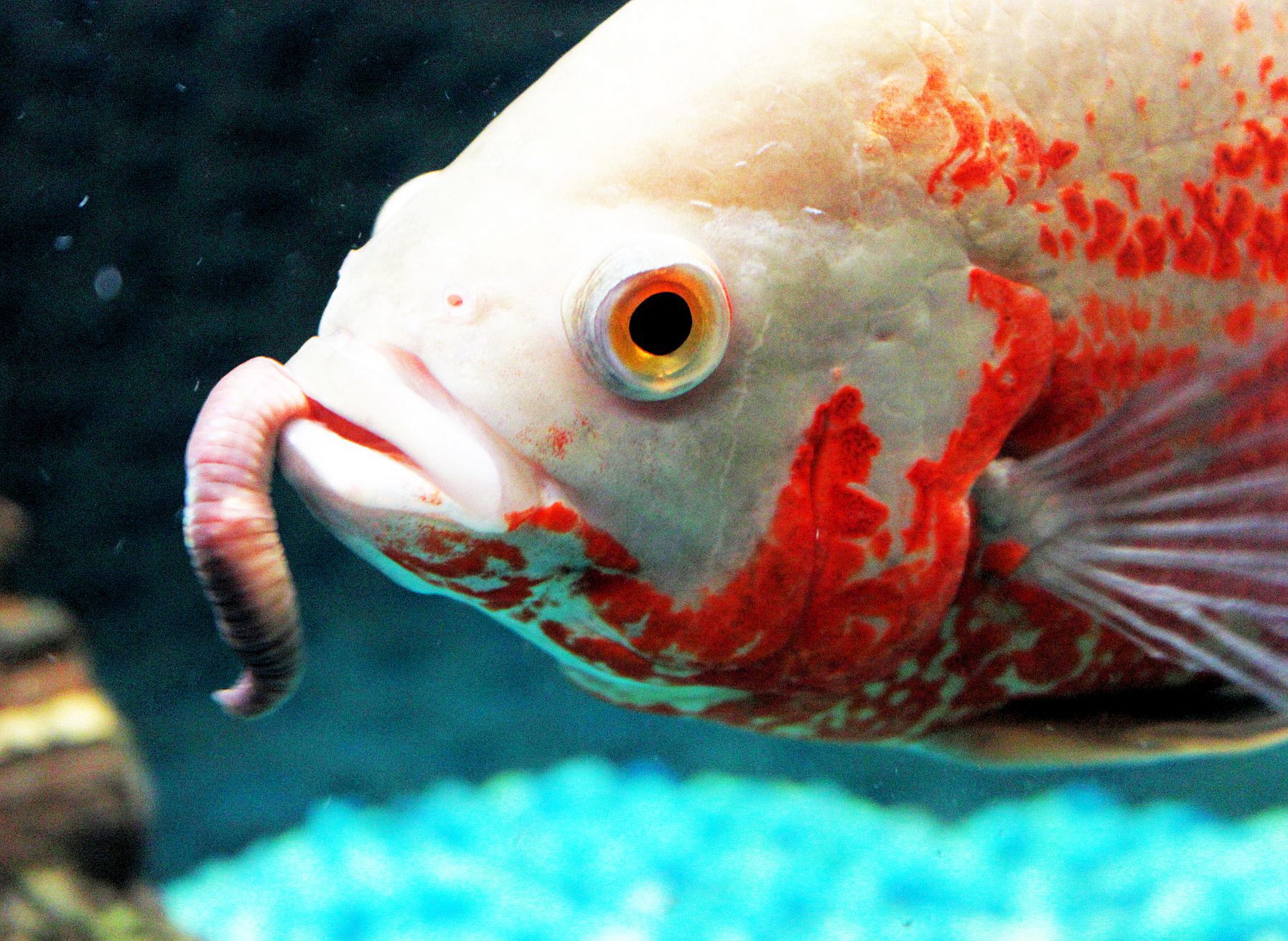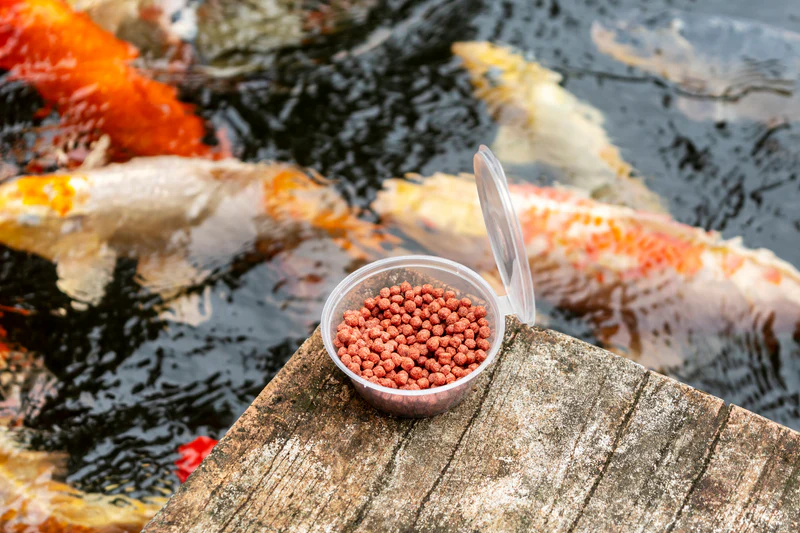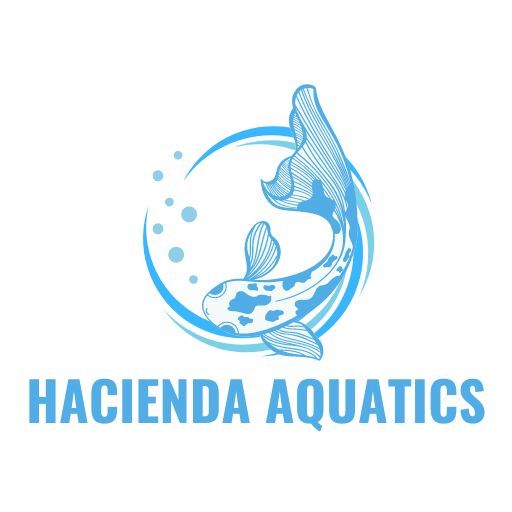Aquatic Knowledge
How to choose the best fish food for your aquarium?
When selecting fish food, you should always consider the species of your fish. Some species are herbivores, while others are carnivores or omnivores. Getting the right diet ensures that your fish thrive in their environment, remain healthy, and display vibrant colors.
Understanding Your Fish’s Dietary Needs

Choosing the best fish food requires a deep understanding of your fish’s dietary needs. Different fish species have unique nutritional requirements based on their natural diets, which can be broadly categorized into three main types: herbivores, carnivores, and omnivores. Let’s dive into each category to understand their specific needs.
Herbivores: Herbivorous fish primarily consume plant-based foods. Their natural diet consists of algae, vegetables, and other plant matter. These fish have specialized digestive systems designed to break down fibrous plant material. When choosing food for herbivorous fish, look for options rich in spirulina, seaweed, and other vegetable-based ingredients. Examples of herbivorous fish include some species of cichlids, plecos, and certain types of goldfish.
Carnivores: Carnivorous fish need a diet high in protein, typically derived from other fish, insects, and crustaceans. Their sharp teeth and short digestive tracts are adapted to process protein-rich foods quickly. When selecting food for carnivorous fish, choose products that list whole fish, shrimp, or other animal proteins as the main ingredients. Popular carnivorous fish include bettas, piranhas, and many species of catfish.
Omnivores: Omnivorous fish have a more varied diet, consuming both plant and animal matter. These fish require a balanced diet that includes proteins, vegetables, and other nutrients to thrive. Omnivores are generally easier to feed because they can eat a wide variety of foods. Examples of omnivorous fish include guppies, mollies, and most types of tetras.
Types of Fish Food
Understanding the different types of fish food available is crucial in providing the best nutrition for your aquatic pets. Here are the main types of fish food, each with its own benefits and uses:
- Flake Food
- Pellet Food
- Freeze-Dried Food
- Frozen Food
- Live Food
- Gel Food
Flake Food

Advantages and Disadvantages: Flake food is one of the most common types of fish food. It’s convenient, easy to store, and suitable for a wide range of fish species. However, it can lose nutritional value quickly once opened, and it may not sink fast enough for bottom-dwellers, leaving them without access to the food.
Best Practices for Feeding Flake Food: To avoid overfeeding and maintain water quality, feed your fish in small amounts. Ensure all fish have access to the food by spreading it evenly across the tank surface. Consider using a feeding ring to keep flakes from scattering and to prevent clogging your filter.
How to Choose the Best Fish Food: When choosing the best fish food, consider the specific dietary needs of your fish species, their natural feeding habits, and the type of food that best suits their nutritional requirements. A balanced diet, combined with proper feeding practices, will ensure your fish remain healthy, vibrant, and thriving.
Pellet Food

Benefits of Pellet Food: Pellet food is a dense, nutrient-rich option that makes an excellent staple for many fish species. It comes in various sizes and types, catering to different feeding habits. Pellets are often formulated to provide a balanced diet, ensuring your fish receive all necessary nutrients.
Types of Pellet Food (Floating vs. Sinking)
- Floating Pellets: These are ideal for surface feeders such as bettas and gouramis. Floating pellets remain on the water’s surface, making it easy for these fish to feed.
- Sinking Pellets: These are suitable for bottom-dwelling fish like catfish and loaches. Sinking pellets quickly reach the bottom of the tank, allowing these fish to feed naturally.
How to Choose the Right Pellet Size: Selecting the right pellet size is crucial to ensure your fish can eat comfortably. Choose a pellet size that fits easily into your fish’s mouth without causing them to struggle. For smaller fish, opt for micro pellets, while larger fish may require bigger pellets.
Freeze-Dried Food

Pros and Cons: Freeze-dried food retains much of its nutritional value and is convenient to store. However, it can be more expensive than other types of fish food and may lack the moisture content found in fresh or frozen foods.
Popular Freeze-Dried Options
- Brine Shrimp: A high-protein option popular with many fish species.
- Bloodworms: Rich in nutrients and favored by carnivorous fish.
- Tubifex Worms: Suitable for a variety of fish, offering good nutritional value.
Frozen Food

Nutritional Benefits: Frozen food is highly nutritious and often considered closer to a fish’s natural diet. It includes a variety of options such as krill, shrimp, and plankton, providing essential proteins and fats.
Common Types of Frozen Food
- Bloodworms: A favorite among many fish species, especially carnivores.
- Daphnia: Small crustaceans that are excellent for providing roughage.
- Mysis Shrimp: Rich in protein and ideal for both marine and freshwater fish.
How to Properly Store and Thaw Frozen Food: Keep frozen food at a consistent temperature in the freezer to maintain its quality. Thaw frozen food in tank water before feeding to prevent temperature shock to your fish.
Live Food

Benefits of Live Food: Live food stimulates natural hunting behaviors and is highly nutritious. Feeding live food can enhance the color and vitality of your fish.
Types of Live Food
- Brine Shrimp: Excellent for both freshwater and marine fish.
- Daphnia: Small, live crustaceans that many fish love.
- Worms: Including blackworms and tubifex worms, which are rich in protein.
Precautions and Considerations When Feeding Live Food: Ensure live food is disease-free and appropriately sized for your fish. Use reputable suppliers to avoid introducing parasites or diseases into your tank.
Gel Food
What is Gel Food?
Gel food is a customizable type of fish food that can be tailored to meet specific dietary needs. It often contains a mix of proteins, vegetables, and other nutrients, providing a balanced diet.
Advantages of Gel Food
- Highly Nutritious: Packed with essential vitamins and minerals.
- Customizable: Can be tailored to the specific needs of your fish.
- Long-Lasting in Water: Does not disintegrate quickly, reducing waste.
How to Prepare and Feed Gel Food
Follow the package instructions for preparation. Feed in portions appropriate to your fish’s size and appetite, ensuring all fish have access to the food.
Reading Fish Food Labels
Understanding the Ingredients List: Look for high-quality ingredients such as whole fish, shrimp, or algae. Avoid foods with excessive fillers like wheat or corn, which offer little nutritional value.
Identifying Quality Ingredients: High-quality fish food will list specific sources of protein and nutrients. Avoid vague terms like “fish meal” without specific details, as they can indicate lower quality.
Avoiding Harmful Additives: Stay clear of foods with artificial colors and preservatives, which can harm fish over time. Opt for natural ingredients whenever possible.
Feeding Frequency and Portion Control
How Often to Feed Different Types of Fish
- Herbivores: Require small, frequent meals throughout the day to mimic their natural grazing habits.
- Carnivores: Typically need feeding once or twice a day with protein-rich foods.
- Omnivores: Benefit from being fed two to three times a day, with a mix of plant and animal matter.
Determining the Right Amount of Food: Feed only what your fish can consume in a few minutes. Overfeeding can lead to poor water quality and health issues. Regularly monitor feeding habits and adjust portions as needed.
Special Dietary Needs
Feeding Fry (Baby Fish): Fry need more frequent feeding with finely crushed or special fry food to support rapid growth and development. Small, frequent meals are crucial.
Diet for Breeding Fish: Breeding fish may need additional protein and nutrients to support reproductive health. High-quality food can enhance breeding success.
Diet for Sick or Recovering Fish: Offer high-quality, easily digestible food to support immune function and recovery. Focus on providing a balanced diet to aid in healing.
DIY Fish Food
Benefits of Homemade Fish Food: Homemade fish food can be tailored to your fish’s specific dietary needs and is free from additives and preservatives. It allows for complete control over ingredients and nutrition.
Simple Recipes for Homemade Fish Food: Blend vegetables, proteins, and gelatin to create nutritious gel food. Freeze in portions for easy feeding, ensuring each meal is fresh and nutritious.
How to Choose the Best Fish Food

Choosing the best fish food involves understanding your fish’s dietary needs, selecting the appropriate type of food, and following best feeding practices. By providing a balanced and nutritious diet, you can ensure your fish remain healthy, vibrant, and thriving.
Conclusion
Choosing the right fish food is essential for the health and happiness of your aquatic pets. By considering the species, size, and feeding habits of your fish, you can ensure they get the best diet possible. Always read labels, avoid overfeeding, and store food properly to keep your fish healthy and your tank clean.
FAQs
How do I know if my fish is getting the right nutrients?
Look for signs of good health such as vibrant colors, active behavior, and regular growth. Regularly check the nutritional content of the food you’re providing.
Can I mix different types of fish food?
Yes, mixing different types of food can provide a balanced diet and ensure your fish get a variety of nutrients.
How long can fish go without food?
Most fish can go a few days without food, but it’s best not to make this a regular practice. Always ensure regular feeding.
Are there any signs that indicate I’m feeding my fish too much?
Yes, overfeeding can lead to several issues. Look for uneaten food settling at the bottom of the tank, cloudy water, and fish showing signs of bloating or obesity. Regularly monitor water quality and fish behavior to catch these signs early.
